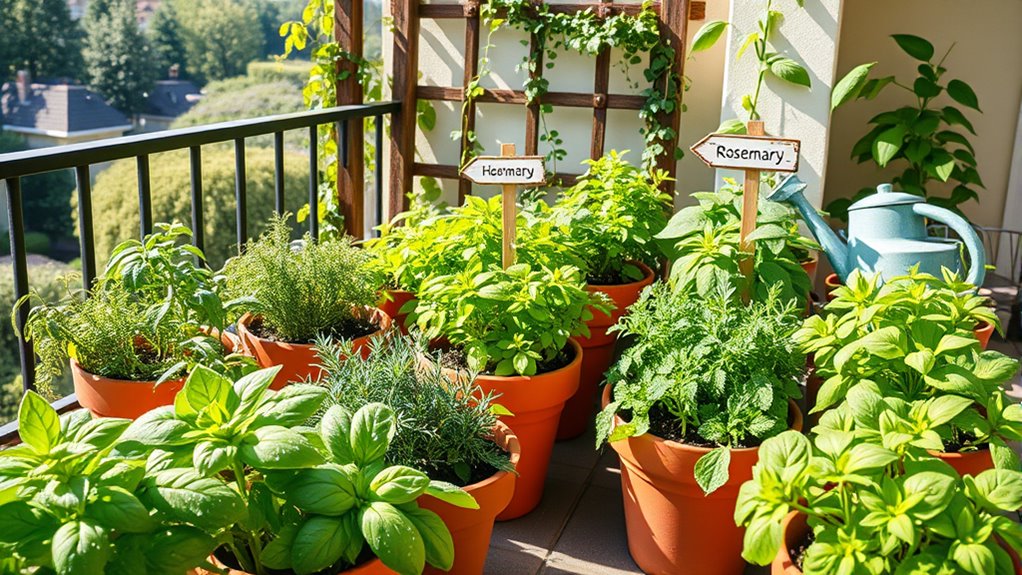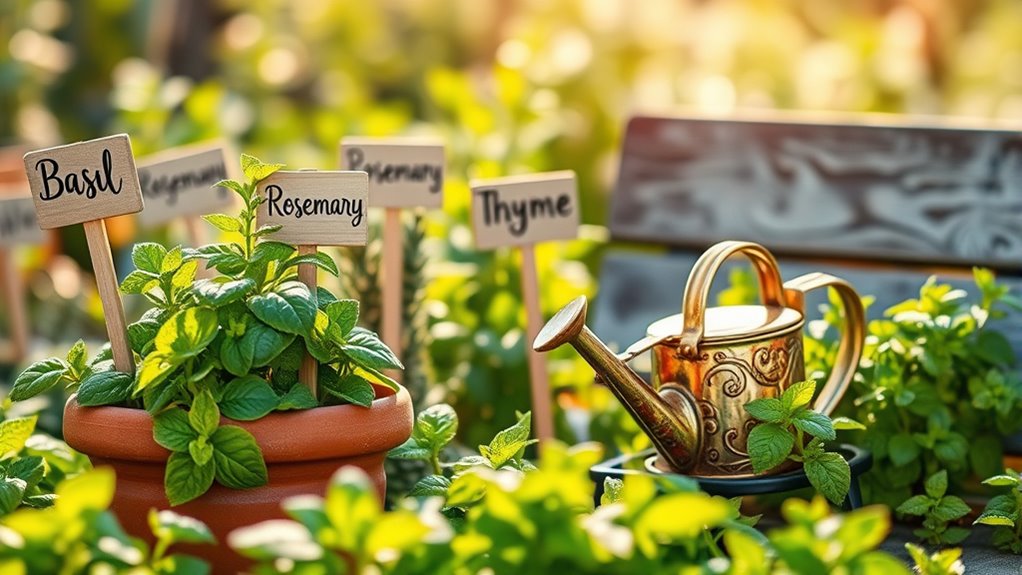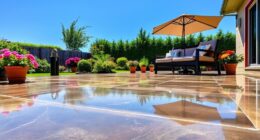Creating an indoor herb garden is a fun DIY trick that can elevate your cooking and home decor. Start by choosing a transportable container, like a galvanized caddy, and prepare a nutrient-rich soil mix with potting soil and compost. Plant herb starters, like rosemary and oregano, and water them thoroughly. Regularly check on your plants and adjust their care as needed. You’ll discover even more tips and tricks to make your herb garden thrive.
Key Takeaways
- Use a transportable container like a galvanized utensil caddy for easy movement and organization of multiple herbs.
- Ensure proper drainage by adding a layer of aquarium gravel to prevent root rot and promote healthy growth.
- Mix potting soil with organic compost to provide essential nutrients and beneficial microorganisms for optimal herb development.
- Start with herb starters such as rosemary or oregano for quicker results and a higher success rate in your garden.
- Regularly monitor your plants and adjust care routines, including watering and light exposure, to maintain a healthy herb garden.

If you’re looking to bring fresh flavors to your kitchen, starting an indoor herb garden is a perfect choice. This herb garden project not only enhances your culinary experience but also adds a touch of greenery to your home. The beauty of an indoor herb garden is that it can thrive in compact spaces, and you can customize it to suit your taste.
Begin by selecting a transportable container, like a galvanized utensil caddy. This herb planter allows you to move your plants around easily and accommodates multiple herbs in separate compartments, making it ideal for your gardening efforts. For proper drainage, place a layer of aquarium gravel at the bottom of your container. This ensures excess water can escape, preventing root rot and promoting healthy growth.
Select a transportable container for your indoor herb garden, ensuring proper drainage with aquarium gravel for healthy growth.
Next, fill your caddy with a mix of potting soil and organic compost. This combination provides optimal growth conditions for your planted herbs. The potting soil offers necessary nutrients, while the organic compost enriches the mix with beneficial microorganisms. You want your herbs to grow strong, so be mindful of the soil quality at this stage.
When it comes to selecting your herbs, opt for herb starters like rosemary, sage, and oregano instead of seeds. These starters give you quicker results and a higher success rate in your gardening efforts. Once you’ve chosen your herbs, carefully plant them in the container.
After planting, water your newly planted herbs thoroughly to help establish their roots. This initial watering is crucial, so don’t skip it!
As your indoor herb garden begins to flourish, make it a habit to monitor your plants regularly. Keep an eye out for any signs of health or distress. Adjust your care routine as necessary, whether that means changing the watering schedule or relocating your herb planter for better light exposure.
Don’t forget to engage with the gardening community. Whether it’s through online forums or local gardening clubs, sharing experiences can provide valuable insights and tips for your indoor herb garden.
You’ll find that learning from others can enhance your gardening skills and deepen your appreciation for growing your own fresh herbs. With a little patience and dedication, your herb garden project will yield delicious flavors that elevate your culinary creations.
Frequently Asked Questions
Which Herbs Should Not Be Planted Together?
When planning your herb garden, it’s crucial to know which herbs shouldn’t be planted together.
Avoid pairing basil and rosemary due to their differing needs.
Keep mint separate, as it’s invasive.
Fennel can inhibit growth for dill and coriander, so plant it alone.
Chives and garlic can stunt legumes’ growth, so keep them apart.
While oregano and thyme coexist well, steer clear of parsley to prevent overwatering issues.
Happy gardening!
What Is the Secret to Growing Herbs?
The secret to growing herbs lies in understanding their unique needs. You need to provide the right light, water, and soil conditions for each type.
Regularly harvesting your herbs encourages bushier growth, preventing them from becoming leggy. Use biodegradable pots for easy transfers, and maintain a consistent environment that mimics their native habitats.
Pay attention to each herb’s preferences, and you’ll enjoy a thriving herb garden in no time!
Which Herbs Grow Well Together in the Same Container?
Ever tried to create a harmonious herb symphony in your garden? You can plant basil, parsley, and cilantro together since they thrive on similar water and sunlight needs.
For a dryer environment, rosemary, thyme, and oregano make great companions. Just remember to give mint its own pot to avoid an herb takeover!
Lastly, chives and garlic chives can share a container, enhancing your culinary creations when harvested together. Happy gardening!
What Is the Key to an Herb Garden?
The key to a thriving herb garden is selecting the right container with good drainage and size.
You’ll want to use a well-draining potting mix mixed with compost for better nutrient access.
Ensure your herbs get at least 6-8 hours of sunlight daily.
Water them regularly, letting the soil dry slightly between waterings.
Lastly, understand the specific needs of each herb to promote optimal growth and health.
Conclusion
With your herb garden thriving, you’ll not only enjoy fresh flavors but also contribute to a more sustainable lifestyle. Did you know that growing your own herbs can reduce grocery expenses by up to 30%? Plus, the satisfaction of nurturing your plants from seed to harvest is unmatched. So, take pride in your green thumb and keep experimenting with different herbs. Your culinary creations will thank you, and your garden will flourish with every effort you put in!









